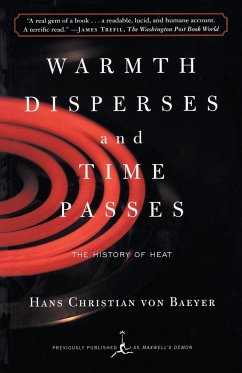If you want to know what's happening in the world, follow the heat. Why can't your coffee "steal" heat from the air to stay piping hot? Why can't Detroit make a car that's 100 percent efficient? Why can't some genius make a perpetual motion machine? The answers lie in the field of thermodynamics, the study of heat, which turns out to be the key to an astonishing number of scientific puzzles, including why time inexorably runs in only one direction. In Warmth Disperses and Time Passes: The History of Heat, physics professor Hans Christian von Baeyer tells the story of heat through the lives of the scientists who discovered it. With his trademark elegant prose, eye for lively detail, and gift for lucid explanation, Professor von Baeyer turns the contemplation of a cooling coffee cup into a beguiling portrait of the birth of a science with relevance to almost every aspect of our lives.








